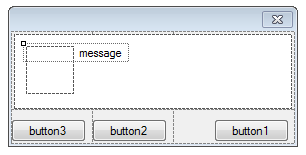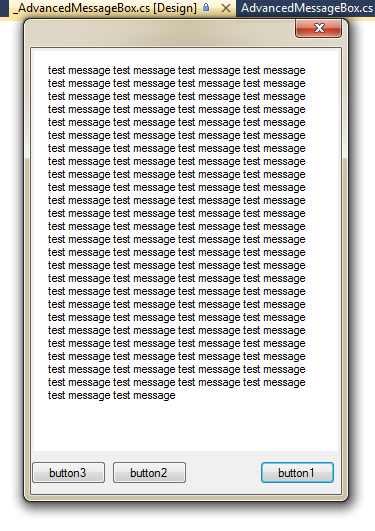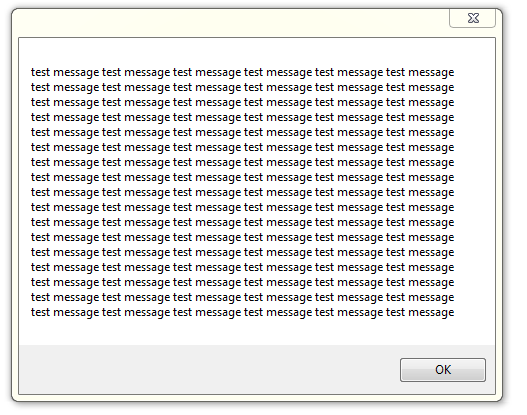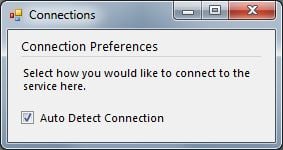Greetings again friends!
It's been a while since I've visited. I had to take a while off from working because of family issues, but things are getting better and I'm starting to work again and that means I get to come back and exchange Q&A with the best programming web group out there!
So...I have a question and was hoping someone might be able to throw a few cents my way.
To clarify, I am not a great GUI designer, I write code, not align things and make it look pretty.
I am writing a customizable dialog box for a library of controls. The window consists of a TableLayoutPanel control with 2 rows and 3 columns all set to "Auto Size" themselves based on content.
The problem I have is, the columns are aligned in auto size mode to the right in a 25%, 25%, 50% type of layout...I need it reversed.
Here's a screen shot from the designer:
and here's a screen shot with example text:
and the standard message box with the same sample text:
Despite the obvious design differences, the buttons are the problem.
I can't set the columns to an exact size since the user is allowed to indicate how many buttons to show, and what the button text will say, so if the user says "show button 1 and make it say 'Click here to blow the entire …



 I was tired of always looking for a way to underline labels like in Windows property dialogs. I created this little control that allows you to set a two-tone line above, below behind or in front of a label (even through it!) to solve that problem.
I was tired of always looking for a way to underline labels like in Windows property dialogs. I created this little control that allows you to set a two-tone line above, below behind or in front of a label (even through it!) to solve that problem.
